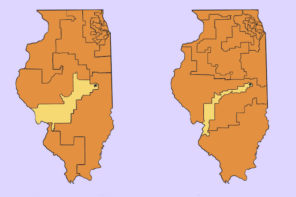Egyptians have shown the world that there is something called a nonviolent awakening of the people—something I have grown to term “the Square,” as opposed to a revolution, after Tahrir Square. But that it can only be done when the people are united together in solidarity. That solidarity might not be represented in a regular organization (it certainly wasn’t in the Square) but it has to exist in real terms.
Many worried about the conservative Islamists in the Square, but they—just as much as the Westernized, American-educated youth who were also in the Square—are a part of Egypt. Those in niqabs existed in the Square, as did those women who didn’t cover their hair, because they are a part of Egypt. The priests of the Coptic Church were there, as well as imams from the Azhar, because they are a part of Egypt. Those with disabilities, those without, young, old, poor, rich—all parts of Egypt were in that Square. When anyone ever entered the Square, they knew they were seeing what Egypt really was, and it was inspiring to see it all in that microcosm, where plurality existed in an environment of peace and coexistence.
As the weeks and months ahead unfold, its clear that there will be a need for even more civic actions that uphold the true lessons behind what transpired within the Square; whether in Egypt or abroad. Initiatives and projects that will be developed, such as a multimedia archive of some of the most glorious lessons learnt in the Square, including respect for religious pluralism, the disabled, and the environment.
As Egypt goes past the first hurdle, it begins the larger challenge: rebuilding civil society. Egyptians have begun that voyage, and they have proven to themselves, and to the world, that that kind of civic work is instinctive. It is a reflection of the indomitable power of the human spirit—and in doing what they have done in the Square, far beyond the political achievement of toppling a dictator, maybe Egyptians will inspire the world to revitalise civil society far beyond its borders. The Square provides lessons, I think, not just for the people of Egypt, but for the people of the world, who all exist in societies that are plural in some way or another.
The spirit of Tahrir Square should be multiplied; within Egypt for the sake of her people, as they rebuild, and within the world for humanity at large. Tahrir Square should be squared, domestically and internationally, which is why a new website, Tahrir Square2, will be launched in the coming days and weeks to facilitate the initiatives mentioned above, and the multiplication of the power of civil society in Egypt and abroad.
The Square began as a negative protest against a tyrant, and transformed into a positive commitment to all the people of Egypt. I do not see why it cannot continue as a model for peoples elsewhere—and perhaps one day, peoples elsewhere will send their own delegations, made up of the same plurality as we did in Tahrir, as delegations to Cairo. And in so doing, never forgetting those who lost their lives so that people might live in hope again.


